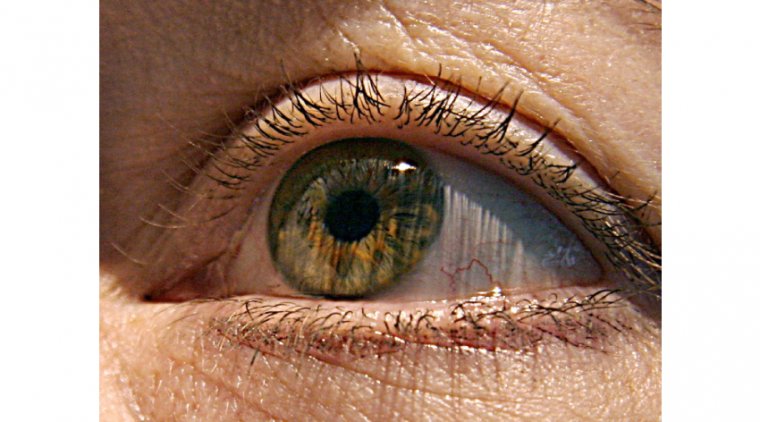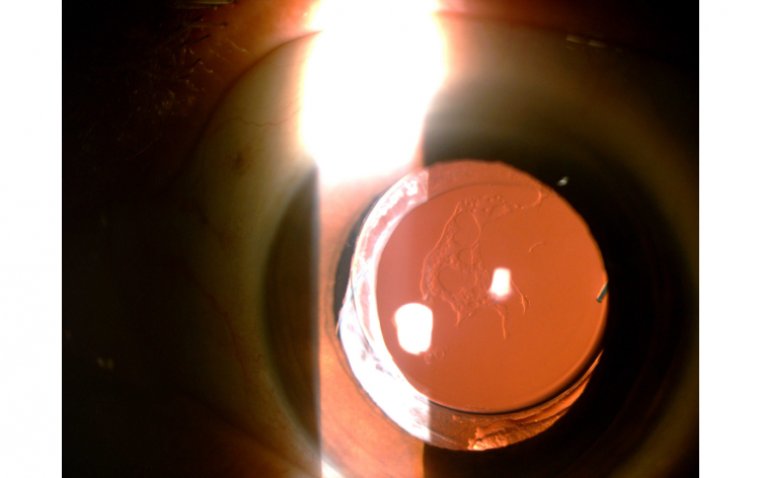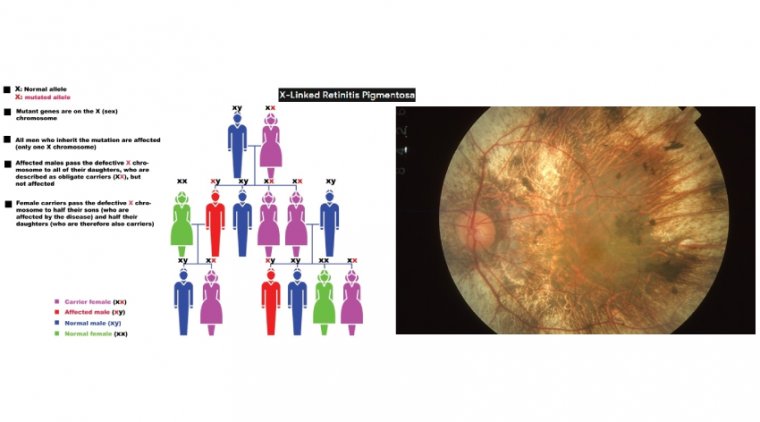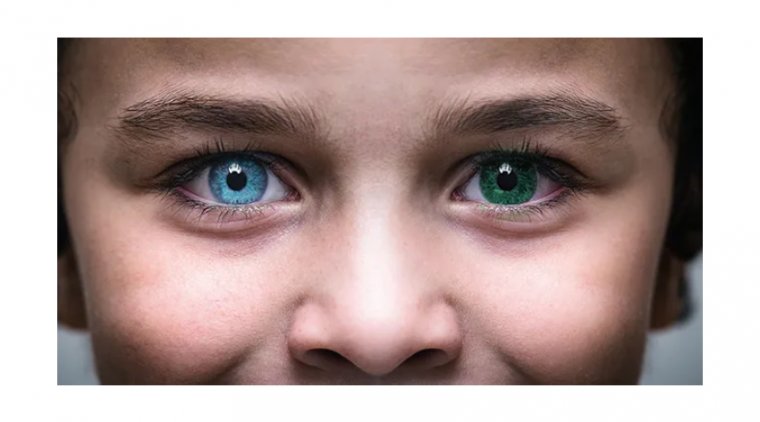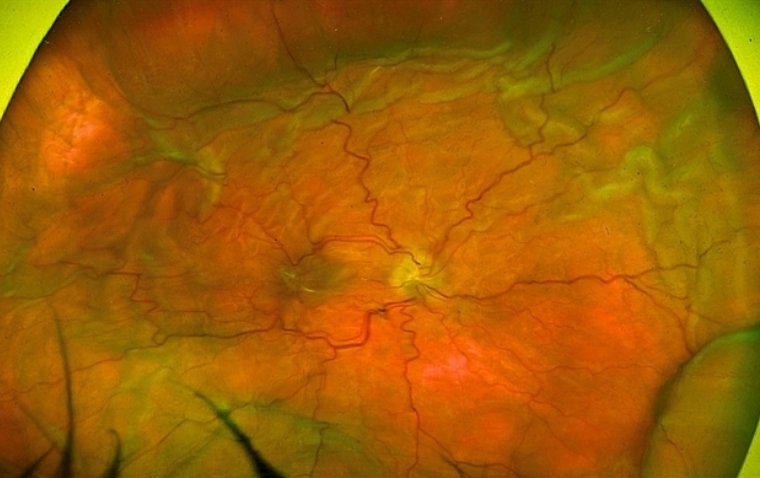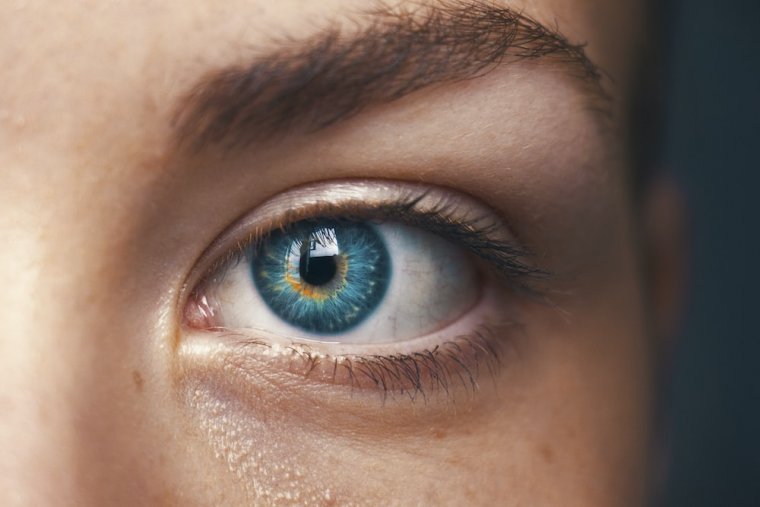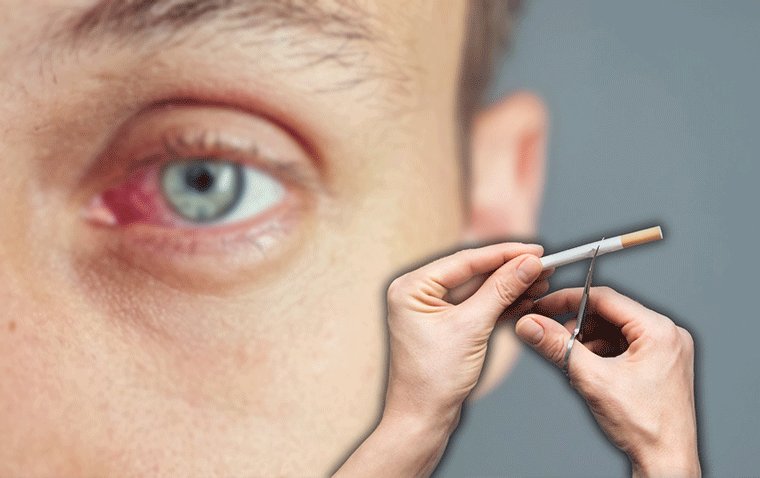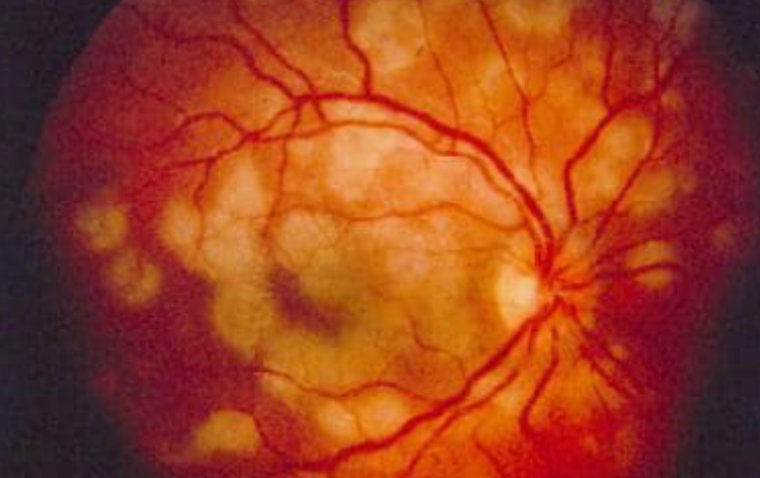
2023 Recap: Top 20 Ophthalmic Partnerships of the Year
As we bid farewell to 2023, it's time to reflect on the remarkable collaborations that have shaped the landscape of ophthalmic innovation. The past year witnessed groundbreaking partnerships between pharmaceutical giants, tech innovators, and research institutions, all aimed at advancing eye care and ushering in new possibilities for patients around the globe.
Here's a recap of the top 20 collaborations in the ophthalmic field:
1. AbbVie and Capsida's Gene Therapy Collaboration
.jpg) AbbVie and Capsida Biotherapeutics have expanded their strategic partnership to advance gene therapies addressing critical unmet needs in eye diseases. The collaboration will merge AbbVie's extensive capabilities with Capsida's AAV engineering platform, progressing three programs.
AbbVie and Capsida Biotherapeutics have expanded their strategic partnership to advance gene therapies addressing critical unmet needs in eye diseases. The collaboration will merge AbbVie's extensive capabilities with Capsida's AAV engineering platform, progressing three programs.
This extended partnership, building upon a 2021 neurodegenerative disease collaboration, includes an upfront payment and potential equity investment totaling $70 million for Capsida. Additionally, Capsida stands to gain up to $595 million through option fees, research and development milestones, and mid-to-high single-digit royalty payments for the three programs' future product sales.
Capsida will take the lead in capsid discovery, AAV engineering platform utilization, and early clinical manufacturing across all programs. In contrast, AbbVie will spearhead the development and commercialization of innovative therapeutic cargo approaches.
Discover the collaboration between AbbVie and Capsida to develop gene therapies for eye diseases.
2. Topcon Healthcare and Ophtai's AI Partnership
.jpg)
Topcon Healthcare Solutions and OphtAI, a collaborative venture specializing in Artificial Intelligence (AI) for ophthalmology, have forged a partnership to seamlessly integrate OphtAI into Topcon's Harmony Referral System. This collaboration aims to empower eye care professionals with enhanced access to AI services.
Using OphtAI's cutting-edge AI algorithm, eye care professionals can swiftly detect various eye pathologies such as diabetic retinopathy (including its gradation), macular edema, glaucoma, and AMD within seconds, utilizing just a single color fundus image. This technology facilitates early detection of these conditions, providing crucial advantages for eye care practitioners.
With this partnership, eye care professionals can conveniently access OphtAI through Harmony, irrespective of the color fundus device they use. Topcon Harmony, being a vendor-neutral data management platform, ensures compatibility with devices from any manufacturer.
Learn about the partnership between Topcon Healthcare and OphtAI.
3. Zeiss and Boehringer Ingelheim's Vision Loss Prevention
.jpg) Zeiss Medical Technology and Boehringer Ingelheim have jointly unveiled a comprehensive, long-term strategic collaboration with the shared goal of developing predictive analytics. Their mission is to enable early detection of eye diseases and facilitate more personalized treatments, ultimately preventing vision loss in individuals with eye-related conditions.
Zeiss Medical Technology and Boehringer Ingelheim have jointly unveiled a comprehensive, long-term strategic collaboration with the shared goal of developing predictive analytics. Their mission is to enable early detection of eye diseases and facilitate more personalized treatments, ultimately preventing vision loss in individuals with eye-related conditions.
This collaborative effort seeks to leverage their combined expertise in ophthalmological technology, data analytics, algorithms, and the creation of innovative treatments. The primary focus is on advancing early detection and treatment methods for retinal diseases, aiming to halt irreversible vision loss.
While the financial details of this partnership remain undisclosed, the collaboration will primarily concentrate on identifying early-stage markers of retinal diseases. This involves utilizing Zeiss Medical Technology's cloud-connected devices and employing AI-assisted analysis of image data sets to enhance the diagnostic capabilities in the realm of eye health.
4. Kriya and Everads Advancing Gene Therapies
.jpg) Kriya Therapeutics has forged an exclusive license, collaboration, and supply agreement with Everads Therapy to advance its gene therapy portfolio for retinal diseases. Everads, a pioneering biotechnology company, has developed a revolutionary suprachoroidal delivery device facilitating precise therapy administration to the retina—an anatomical space between the sclera and choroid in the eye's posterior segment.
Kriya Therapeutics has forged an exclusive license, collaboration, and supply agreement with Everads Therapy to advance its gene therapy portfolio for retinal diseases. Everads, a pioneering biotechnology company, has developed a revolutionary suprachoroidal delivery device facilitating precise therapy administration to the retina—an anatomical space between the sclera and choroid in the eye's posterior segment.
This collaboration taps into the emerging field of suprachoroidal delivery, offering a non-surgical method within ophthalmology. In the context of gene therapy, this approach enhances delivery effectiveness to the retina while minimizing the risk of intraocular inflammation. The agreement grants Kriya access to Everads' suprachoroidal delivery technology for multiple predefined gene therapy candidates targeting various ophthalmic diseases, including those associated with the complement cascade, identified as a factor in the development of geographic atrophy.
This strategic partnership positions Kriya to leverage cutting-edge technology in optimizing gene therapy administration for enhanced efficacy in treating retinal diseases.
Explore the collaboration between Kriya and Everads to advance gene therapies for eye diseases.
5. Genentech and NVIDIA's AI Research Initiative
.jpg)
Genentech has unveiled a multi-year strategic research collaboration with Nvidia to streamline drug discovery and development processes. The specific financial details of the agreement have not been disclosed. The partnership aims to merge Genentech's artificial intelligence (AI) capabilities, biological and molecular datasets, and research proficiency with Nvidia's accelerated computing capabilities and AI expertise.
This collaborative initiative seeks to propel Genentech's AI research programs forward by advancing its generative AI models and algorithms into a next-generation AI platform. The objective is to expedite the discovery and delivery of innovative therapies and medicines.
The collaboration will focus on enhancing and optimizing Genentech's proprietary machine learning algorithms and models using Nvidia DGX Cloud, a training-as-a-service platform based on dedicated Nvidia AI supercomputing and software, including Nvidia BioNemo tailored for generative AI applications in drug discovery.
Discover the AI research collaboration between Genentech and NVIDIA.
6. Celanese and Glaukos' Sustained-Release Glaucoma Treatment
.jpg) Celanese Corporation and Glaukos Corporation have inked an agreement, wherein Celanese will provide its VitalDose® Drug Delivery Platform as a key component for Glaukos' iDose® TR. The iDose TR stands as a micro-invasive intraocular implant designed to lower intraocular pressure in individuals with primary open-angle glaucoma or ocular hypertension.
Celanese Corporation and Glaukos Corporation have inked an agreement, wherein Celanese will provide its VitalDose® Drug Delivery Platform as a key component for Glaukos' iDose® TR. The iDose TR stands as a micro-invasive intraocular implant designed to lower intraocular pressure in individuals with primary open-angle glaucoma or ocular hypertension.
This implant addresses challenges associated with patient non-adherence and chronic side effects linked to topical medications by providing prolonged therapy that operates around the clock, spanning 24/7.
7. Selagine and Grifols' Immunoglobulin Eye Drops
.jpg) Selagine has revealed a worldwide collaboration with Grifols to advance and market immunoglobulin eye drops for the treatment of dry eye disease. The financial terms of the agreement were not disclosed.
Selagine has revealed a worldwide collaboration with Grifols to advance and market immunoglobulin eye drops for the treatment of dry eye disease. The financial terms of the agreement were not disclosed.
Under the terms of the collaboration, Selagine will obtain an initial payment along with an annual collaboration fee. Grifols, in turn, has committed to financing the entire development process of immunoglobulin eye drops, from inception to FDA approval.
This comprehensive process, encompassing clinical, manufacturing, and regulatory activities essential for FDA endorsement for the treatment of dry eye disease, will be jointly overseen by Grifols and Selagine.
Learn about the collaboration between Selagine and Grifols on developing immunoglobulin eye drops for DED.
8. WCO and Alcon's Dry Eye Tool
.jpg) The World Council of Optometry (WCO) and Alcon extended an invitation to eye care professionals worldwide to join them at the launch of a new tool that aided in the diagnosis and treatment of dry eye disease.
The World Council of Optometry (WCO) and Alcon extended an invitation to eye care professionals worldwide to join them at the launch of a new tool that aided in the diagnosis and treatment of dry eye disease.
This event marked the culmination of a series of free global dry eye disease educational initiatives that had taken place online. The WCO Alcon Dry Eye Wheel was developed by Professors Jennifer Craig, Lyndon Jones, and James Wolffsohn.
The tool is an interactive, at-a-glance tool that made it easy to reference the three pillars of mitigation, measurement, and management. The tool was designed to be accessible for the broadest possible use, according to Alcon.
Check out the dry eye tool launched by the WCO and Alcon.
9. Florida State University and Lento Bio's Drug Development
.jpg)
Florida State University and Lento Bio, a pharmaceutical company, collaborated in a scientific endeavor to pioneer drugs for presbyopia and various other diseases.
While the prevailing remedies for presbyopia encompass glasses, contact lenses, and surgery, Lento Bio aspires to offer a more efficacious and minimally invasive solution. This involves the development of innovative small-molecule drugs targeting the fundamental cause of the condition.
In this partnership, Lento Bio will collaborate with James Frederich's laboratory at FSU to craft refined iterations of its current lead compounds. The goal is to formulate an optimized eye drop for treating presbyopia and mitigating lens stiffness. Furthermore, the collaboration extends to the synthesis of new compounds, contributing to the expansion of Lento Bio's overall drug development pipeline.
10. Elios and International Glaucoma Surgical Registry Collaboration
.jpg)
Elios Vision announced its collaboration with and endorsement of the International Glaucoma Surgical Registry (IGSR). Serving as an open-access platform, the IGSR empowers surgeons to upload and analyze their surgical data, facilitating comparisons with outcomes from various centers.
Having a history spanning over 5 years, the IGSR presently holds data from 7,000 procedures conducted across 63 countries. In a significant development, the IGSR was appointed as the official registry partner of the European Glaucoma Society (EGS) in 2019.
11. Rentschler Biopharma and Ikarovec's Gene Therapy for GA
.jpg) Rentschler Biopharma and Ikarovec have collaborated to advance medical research. In this partnership, Rentschler Biopharma's ATMP site in Stevenage, UK, will play a crucial role in developing AAV material for pre-clinical testing of Ikarovec's groundbreaking gene therapy.
Rentschler Biopharma and Ikarovec have collaborated to advance medical research. In this partnership, Rentschler Biopharma's ATMP site in Stevenage, UK, will play a crucial role in developing AAV material for pre-clinical testing of Ikarovec's groundbreaking gene therapy.
The gene therapy is designed to address geographic atrophy, an advanced stage of age-related macular degeneration. This condition poses a substantial risk by slowly and permanently harming retinal tissue, potentially leading to gradual vision loss. The collaboration is focused on exploring potential solutions for this vision-threatening disease.
12. Orbis and FedEx's Eye Care Training in Vietnam
.jpg) With the support of FedEx, Orbis International launched its first surgical program since 2020 aboard the Flying Eye Hospital—a fully accredited ophthalmic teaching hospital located on board a plane.
With the support of FedEx, Orbis International launched its first surgical program since 2020 aboard the Flying Eye Hospital—a fully accredited ophthalmic teaching hospital located on board a plane.
Over the course of three weeks, Orbis's clinical staff and Volunteer Faculty, consisting of medical experts, provided in-person, hands-on training to a group of 52 eye care professionals. The program included ophthalmologists, nurses, biomedical engineers, and anesthesiologists from the Can Tho region. The goal of the training was to enhance their skills in treating the primary causes of blindness and visual impairment in their communities.
13. American Diabetes Association and Genentech's Equitable Eye Care
.jpg) The American Diabetes Association (ADA) and Genentech established a collaborative partnership to support the ADA's Health Equity Now initiative, which focuses on addressing accessibility to screening and treatment for eye diseases affecting individuals with diabetes.
The American Diabetes Association (ADA) and Genentech established a collaborative partnership to support the ADA's Health Equity Now initiative, which focuses on addressing accessibility to screening and treatment for eye diseases affecting individuals with diabetes.
To kick off the program, a pilot was conducted in Birmingham, Alabama, in collaboration with community organizations. This involved conducting focus group discussions with African Americans to identify barriers to eye health in underserved communities. Additionally, resources such as education and screenings were provided to overcome these challenges. The insights gained from this pilot will inform future joint initiatives between the ADA and Genentech, aimed at advancing health equity in eye care for individuals with diabetes.
14. Eyenovia's Collaboration with Formosa Pharmaceuticals
.jpg) Eyenovia and Formosa Pharmaceuticals joined forces to integrate Eyenovia's Optejet dispensing technology with Formosa's APNT nanoparticle formulation platform. The objective of this collaboration is to explore the potential development of novel topical ophthalmic therapeutics utilizing the Optejet dispenser.
Eyenovia and Formosa Pharmaceuticals joined forces to integrate Eyenovia's Optejet dispensing technology with Formosa's APNT nanoparticle formulation platform. The objective of this collaboration is to explore the potential development of novel topical ophthalmic therapeutics utilizing the Optejet dispenser.
Formosa's proprietary APNT platform is designed to reduce the particle size of an active pharmaceutical ingredient with high uniformity and purity. This reduction allows for improved penetration into relevant compartments in the eye, thereby enhancing bioavailability. The minimized size of the ingredient may also broaden the range of existing and future drugs that could benefit from delivery using the Optejet.
15. Lumata Health and Hadley's Vision Impairment Support
.jpg) Lumata Health has teamed up with Hadley, a company specializing in assisting adults with vision loss in discovering alternative methods for daily tasks. The partnership seeks to improve patient outcomes by integrating Lumata's eyecare management platform with Hadley's educational tools.
Lumata Health has teamed up with Hadley, a company specializing in assisting adults with vision loss in discovering alternative methods for daily tasks. The partnership seeks to improve patient outcomes by integrating Lumata's eyecare management platform with Hadley's educational tools.
Thanks to this partnership, patients under Lumata's care will have complimentary access to Hadley's resources, with a Lumata representative guiding them through the sign-up process. Lumata aims to guarantee that individuals within its network have access to the complete suite of tools and tutorials provided by Hadley. It's important to note that Hadley's services are accessible to all individuals experiencing vision impairment.
16. AAO and Fundamental's Ophthalmic Training Improvement
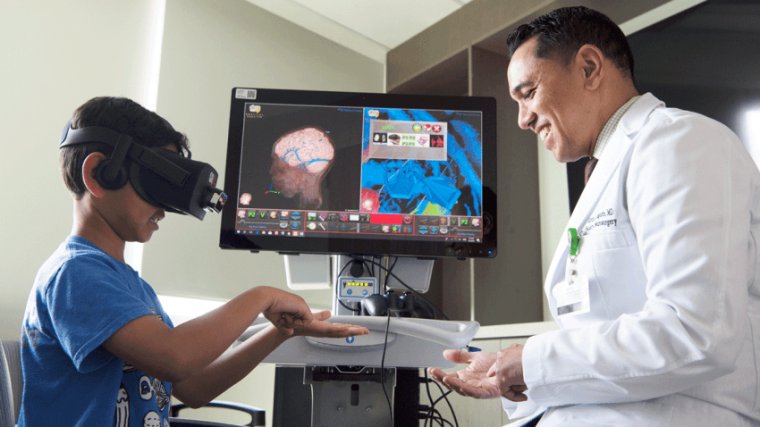
FundamentalVR, a pioneer in medical training through virtual reality (VR), has joined forces with the American Academy of Ophthalmology for the Knights Templar Eye Foundation (KTEF) Pediatric Ophthalmology VR Simulation Program.
Made possible by a generous $5 million donation from the Knights Templar Eye Foundation, this collaboration marks a substantial leap in revolutionizing pediatric ophthalmic training through the integration of VR technology. The program is designed to offer free and unrestricted access to ophthalmologists and ophthalmology trainees globally.
Discover how the AAO and Fundamental are collaborating to enhance ophthalmic training.
17. GameSquare and Vivior's Healthy Screen Habits for Gamers

GameSquare Holdings and Swiss vision care startup Vivior have established a significant multi-year partnership, as officially announced by the company, with the goal of promoting healthy digital habits.
This strategic collaboration encompasses content creation, product development, and competitions, all aimed at increasing awareness among gamers about the potential long-term implications on health, wellness, and performance associated with digital eye strain (DES), inadequate light exposure, poor posture, and other related factors.
18. Iveric Bio Partners with Eric Stonestreet to Raise Awareness of GA
 In collaboration with Eric Stonestreet, a two-time Emmy® award-winning actor, Iveric Bio is uniting efforts to raise awareness about geographic atrophy (GA), a form of age-related macular degeneration (AMD) that can result in irreversible vision loss.
In collaboration with Eric Stonestreet, a two-time Emmy® award-winning actor, Iveric Bio is uniting efforts to raise awareness about geographic atrophy (GA), a form of age-related macular degeneration (AMD) that can result in irreversible vision loss.
Sharing their personal experience with GA and AMD, Eric and his mother, Jamey, aim to inspire others to educate themselves about the disease and take proactive measures to maintain their eye health. The campaign's goal is to increase awareness of GA's potential signs, its rapid progression, and stress the importance of consulting eye care professionals for disease monitoring.
Discover how Iveric Bio and Eric Stonestreet are teaming up to raise awareness about geographic atrophy.
19. Orbis and Heidelberg Engineering Announce Partnership
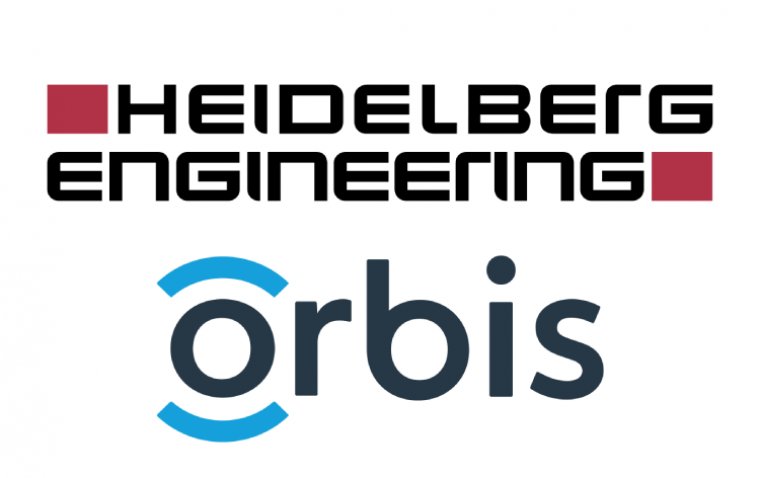 During the 41st European Society of Cataract and Refractive Surgeons (ESCRS) annual meeting on September 8, Orbis announced an innovative partnership program with Heidelberg Engineering. This collaboration signifies a significant stride in addressing global eye health challenges.
During the 41st European Society of Cataract and Refractive Surgeons (ESCRS) annual meeting on September 8, Orbis announced an innovative partnership program with Heidelberg Engineering. This collaboration signifies a significant stride in addressing global eye health challenges.
The primary objective of this partnership is to maximize the potential of Orbis's cutting-edge e-learning and telemedicine platform, Cybersight. The focus is on providing comprehensive training for eyecare professionals worldwide. Through the capabilities of Cybersight, the alliance aims to empower eyecare professionals with advanced knowledge and skills, ultimately enhancing their ability to serve communities more effectively.
Find out about the partnership between Orbis and Heidelberg Engineering announced at the ESCRS Congress.
20. Retinai and Boehringer's AI-Based Treatments for GA
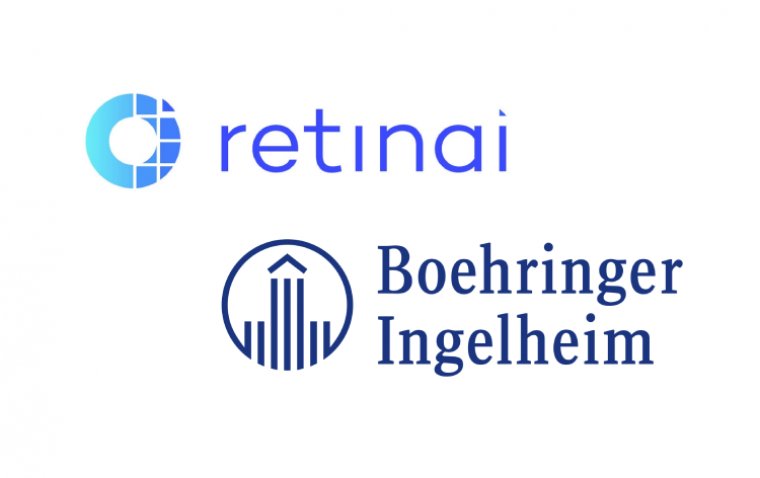 RetinAI Medical AG has revealed a strategic collaboration with Boehringer Ingelheim, aiming to enhance patient outcomes in geographic atrophy (GA). This partnership involves integrating RetinAI's Discovery® platform and AI tools with Boehringer Ingelheim's expertise in retinal disease research.
RetinAI Medical AG has revealed a strategic collaboration with Boehringer Ingelheim, aiming to enhance patient outcomes in geographic atrophy (GA). This partnership involves integrating RetinAI's Discovery® platform and AI tools with Boehringer Ingelheim's expertise in retinal disease research.
Boehringer Ingelheim will assess the effectiveness of RetinAI's AI tools in analyzing imaging datasets from clinical studies and real-world evidence. The primary goal is to identify novel biomarkers and predictors of disease progression. This merging of advanced digital technologies and AI holds the potential to accelerate the development of innovative treatments and streamline early and precise diagnoses.
Click here to read the full article.
Conclusion
These collaborations mark a pivotal moment in the ophthalmic field, showcasing the power of partnerships in driving innovation, advancing research, and ultimately improving the lives of individuals affected by eye diseases. As we look forward to 2024, the ophthalmic community anticipates even more groundbreaking collaborations that will shape the future of eye care.
(1).jpg)
